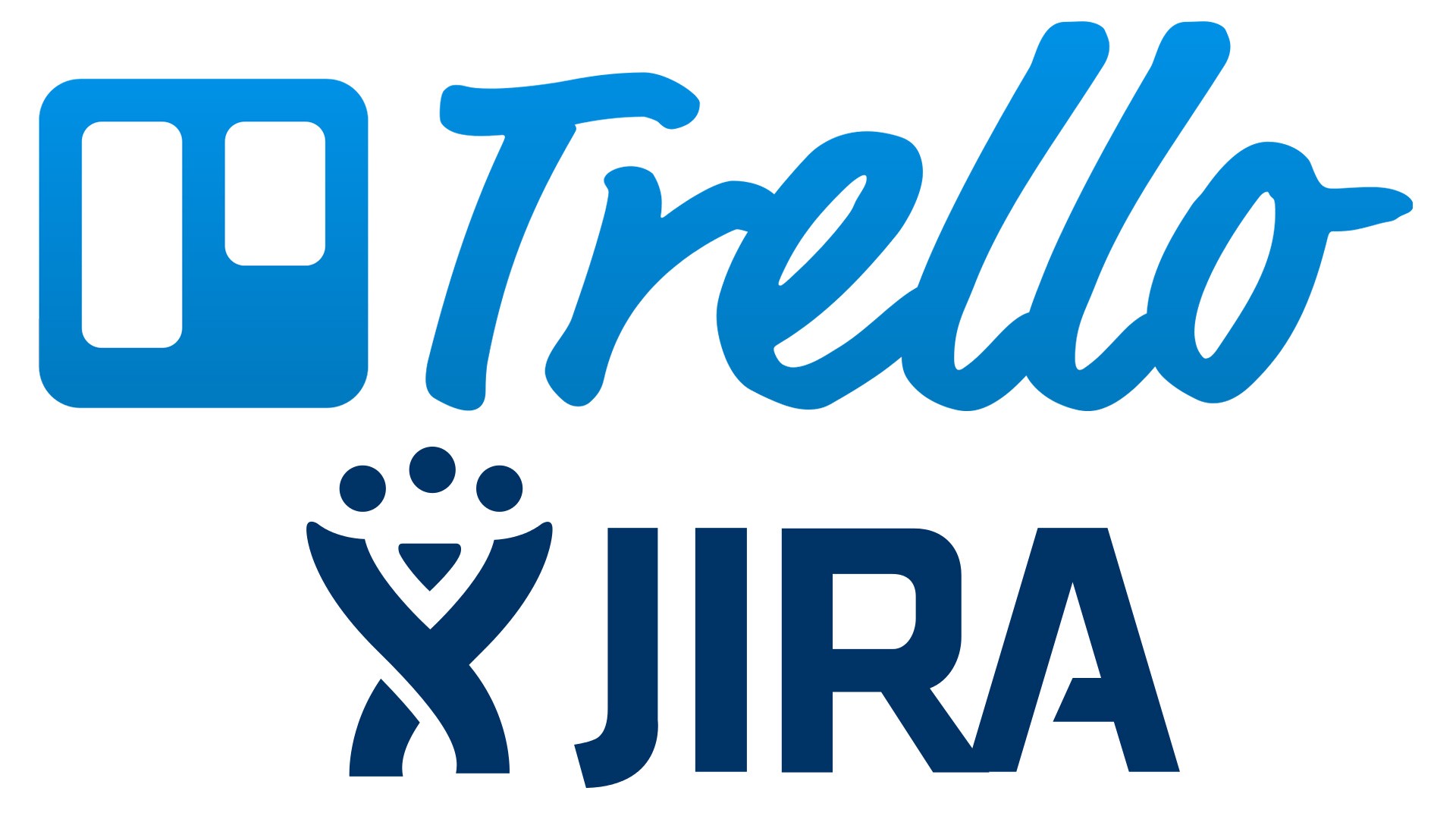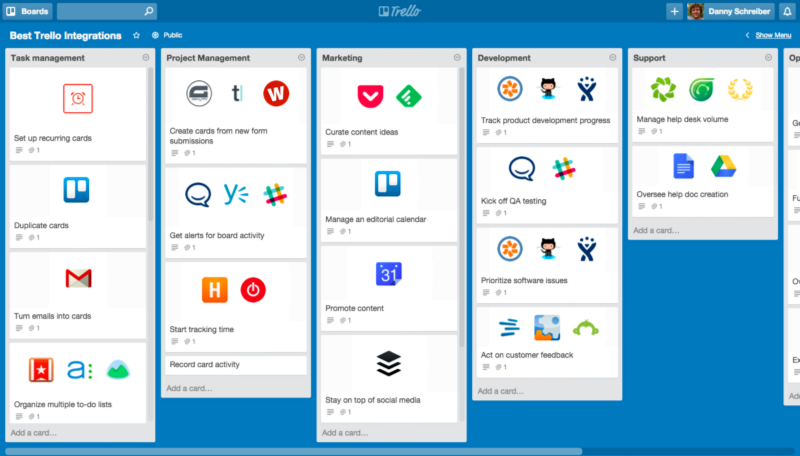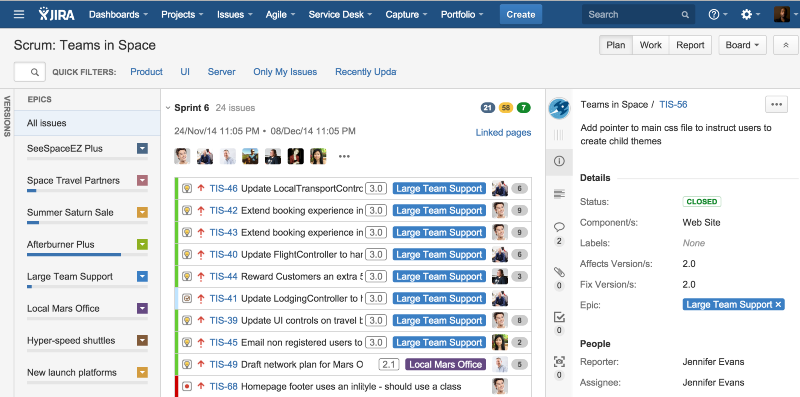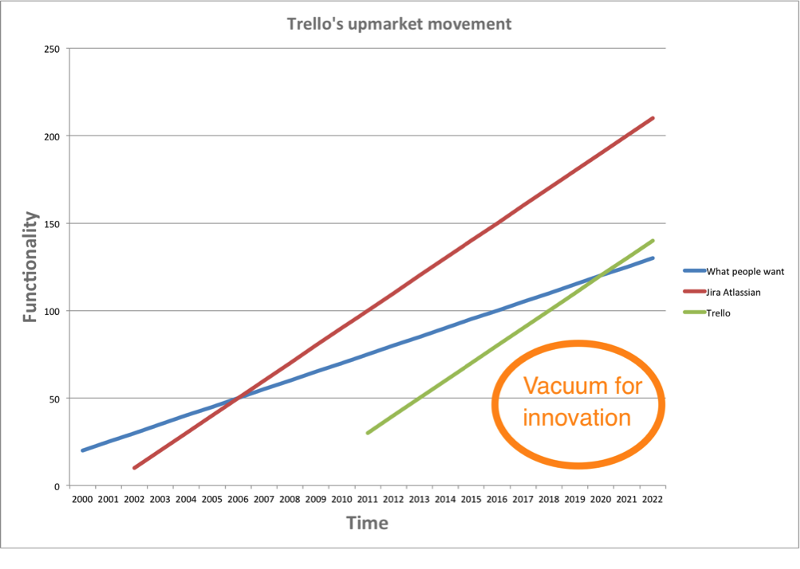How to make a new Trello and sell it for $ 425 million: why Atlassian has posted such a sum
Atlassian, an Australian company specializing in software development management tools, acquired Trello for $ 425 million. The reason: the further advancement of Trello led to the death of Atlassian.

So, how to make a new Trello and get rich on it? But, of course, not creating a clone of Trello. Why? Trello is a classic example of disruptive innovation. When it comes to disruptive innovation, the initiator gets it all. Atlassian acquired Trello for $ 425 million, not because of the brand or user base of this service, but because of the danger that Trello created for the future of this company. For the same reason, Google and other companies make similar acquisitions. If you want to make a startup for 400 million dollars, develop something simple . This article will explain why!
Fog Creek launched the Trello service in 2011 and after six years sold it for $ 425 million. This turned out to be, in general, the largest acquisition of Atlassian. But why did Atlassian pay so much for Trello? Because Trello has undermined the project tracking area. Products based on disruptive technologies are usually cheaper, simpler, smaller and more convenient to use.
Trello brought a different view of value in the market. The components of its value are collaboration and simplicity. The concept of value in the JIRA system offered by Atlassian is another. Atlassian seems to be a well-managed company. Its leaders did everything in accordance with the regulations. They listened to their customers and created an increasingly good and more complex product. By adding new features, they sought to gain new customers. Their product has become elite.
As the company's revenue grew, its product became more complex and difficult to maintain. Moving in the direction of "elitism", Atlassian has created a kind of "vacuum" in the range of low prices that could be entered by competitors with disruptive technologies. This is exactly what Trello did.

The Trello service is a cheaper, simpler and smaller version of the JIRA system. It is intended for clients such as marketers, developers and managers, which Atlassian was not focused on. In 2011, Trello had no competitors, and this service filled the vacuum created by Atlassian. Atlassian has gone too far, moving in this market.
An example of a Trello panel:
')

Zapier.com
JIRA panel example:

Atlassian.com
At the same time, the JIRA system has become expensive. But its main consumers were willing to receive less opportunity at a more appropriate price. As a result, Atlassian has become vulnerable to competitors with cheaper, simpler and more convenient products.
Adding new features, Trello will also move upwards towards higher-quality products and will reach the level of demands of the main part of the market (blue line). When he crosses the blue line, the main clients of the JIRA system will switch to Trello. So disruptive innovation removes a product that is well established in the market. This happened with other products, such as, for example, disk drives and mainframes. The same will happen in the project tracking area.
Now it’s clear why Trello’s service has become the biggest threat to Atlassian’s future. Trello went on the attack. This product had fewer features. He was simple. And he was shockingly cheap. He was subversive!
I do not work for Atlassian. I have no contact with her staff. But I know what people feel when disruptive technology crashes into a company that has been successfully operating on the market for more than 15 years. To put it mildly, it is unpleasant in all respects!
Atlassian CEO did the right thing. Instead of fighting the disruptive technology, he accepted it and bought the Trello service. In an interview, he said:
I am sure that many Atlassian employees do not understand this solution. It does not make sense to them. In their opinion, Trello is a very unimportant product compared to JIRA. But the CEO of Atlassian buying Trello kept the job for their employees and their salary. Because the further advancement of Trello led to the death of Atlassian!
The market reaction was positive. The value of Atlassian shares rose from $ 25.03 on January 9 (the date of the announcement of the purchase) to $ 28.03 on January 23.
According to Clayton Christensen, leadership in disruptive technology is very important. The companies that entered this market first were six times more successful than those that entered later. Therefore, if Atlassian even created its own version of the Trello service, there is no reason to believe that the product would become successful. Atlassian would not be the initiator.
But there is a more serious reason than the lost advantage of the initiator. Atlassian is a public company. For such a company requires an increase of 30% per year. Therefore, every person in the company should make money. Much money. And to make a lot of money, you need large customers.
Atlassian revenue in 2016 amounted to 458 million dollars. In order to grow by 30% in 2017, you need to earn an additional 137 million dollars. The company in its appeal to the shareholders predicted total revenue in the range of 597-603 million dollars.
Trello according to Forbes.com has a regular income of about $ 10 million. The Trello clone could not help Atlassian reach its goal. Atlassian seems to have a lot of good executives. Good managers will never allocate resources to create another Trello, as this will not solve the company's main problem: how to raise revenue. Instead, they will do whatever is necessary to meet the needs of their biggest customers.
Over time, they have formed a certain set of values. They do not care about a possible increase in revenue of $ 10 million. They need a growth of 137 million dollars. Therefore, everyone at Atlassian focuses on large customers and their needs. And such clients need a larger, higher quality and more complex product.
As we have already learned, products based on disruptive technologies are usually cheaper, simpler, smaller in size and more convenient. And this is the opposite of what Atlassian does. In the set of values that Atlassian adheres to, there is no place for the disruptive innovation of Trello.
I remember how Google bought Android. Android operations were not fully integrated into Google’s core business. Moreover, Google employees did not have access to Android offices. As you can see, it was one of the best Google acquisitions. But why didn't Google build Android into its core business? Simply. Because the processes, values, and culture that run on Google would kill Android. This is one of the main reasons due to which newly acquired companies are not embedded in the core business.
Atlassian has been on the market for more than 15 years. The company has established processes, values and culture. She works with other customer segments than Trello. Atlassian has over 1,700 employees. Its leaders must now decide: whether or not the company should integrate Trello into its business.
If Atlassian executives are smart enough, they won't embed Trello. Advice to Trello employees: if you find out that embedding is coming, then start looking for a new job. Embedding means the beginning of the end. This is due to the fact that Trello values are not included in Atlassian values. If something is not included in the company's values, then there will be no move for this “something”!
Trello has created a new emerging market. No emerging markets for 800 million dollars. When emerging markets are small, they attract little to large companies. Therefore, Trello will not receive enough money and resources inside Atlassian.
Atlassian's CEO wrote in his blog: “Trello will become an important part of the Atlassian product range.” I guess it means that it's too early to tell the truth. It will be just the opposite.
In a few years, Trello will cross the blue line. Anything major customers want will be available in Trello. This will be a turning point for JIRA users. They will start moving to Trello.

After crossing the blue line, Trello will enter the main market. Trello will start making huge profits for Atlassian. Trello's earnings will exceed those of JIRA. This is the simple reason why Trello will become the new JIRA system!
Of course, many of you will think that I do not understand the situation well. But this is exactly how subversive innovation works. The weakness of the Trello service today will become its strength tomorrow.
Zapier Platform has published statistics on the fastest growing applications. The first place was Airtable with a growth rate of 682%. I have not heard anything about Airtable, and I was interested to find out what it does. I looked at his site and found out that it is, in principle, a cheaper and simpler version of Microsoft Access. As we have already learned, products based on disruptive technologies, as a rule, are cheaper, simpler, smaller in size and more convenient to use.

And what about the Quip app - a cloud-based word processor? It was created in 2012 and sold to Salesforce for $ 750 million. Quip is similar to Trello. Both are simple in terms of functionality. Quip is a disruptive innovation for Google Docs and Google Sheets. Very similar to how Google recently undermined Microsoft Office.
While some companies are moving towards high-quality and complex products, others use the resulting empty field for innovation as an entry point. If you look closely, then such a vacuum can be found in many industries. Filling it with simple and cheap technology, you can create a start-up for 400 million dollars.

There are some interesting industries waiting for disruptive innovation. One of them is the marketing automation industry, valued at almost $ 4 billion. Many years ago, leaders in the field of marketing automation software slipped too far into this market. The same thing happened in the accounting software market.
Create something new, but simpler and cheaper. Do something that the mainstream market does not wish for now, but will very much wish later. The weakness of today’s day will be the strength of tomorrow’s day.
If you need ideas for your startups worth 400 million dollars, subscribe to my news at http://tarasowski.co
Note. This article is posted on Medium. Medium is a disruptive innovation for Wordpress. Wordpress went too far in the market and as a result created a vacuum for innovation.

So, how to make a new Trello and get rich on it? But, of course, not creating a clone of Trello. Why? Trello is a classic example of disruptive innovation. When it comes to disruptive innovation, the initiator gets it all. Atlassian acquired Trello for $ 425 million, not because of the brand or user base of this service, but because of the danger that Trello created for the future of this company. For the same reason, Google and other companies make similar acquisitions. If you want to make a startup for 400 million dollars, develop something simple . This article will explain why!
Rational reason for acquiring Trello
Fog Creek launched the Trello service in 2011 and after six years sold it for $ 425 million. This turned out to be, in general, the largest acquisition of Atlassian. But why did Atlassian pay so much for Trello? Because Trello has undermined the project tracking area. Products based on disruptive technologies are usually cheaper, simpler, smaller and more convenient to use.
Trello brought a different view of value in the market. The components of its value are collaboration and simplicity. The concept of value in the JIRA system offered by Atlassian is another. Atlassian seems to be a well-managed company. Its leaders did everything in accordance with the regulations. They listened to their customers and created an increasingly good and more complex product. By adding new features, they sought to gain new customers. Their product has become elite.
As the company's revenue grew, its product became more complex and difficult to maintain. Moving in the direction of "elitism", Atlassian has created a kind of "vacuum" in the range of low prices that could be entered by competitors with disruptive technologies. This is exactly what Trello did.

The Trello service is a cheaper, simpler and smaller version of the JIRA system. It is intended for clients such as marketers, developers and managers, which Atlassian was not focused on. In 2011, Trello had no competitors, and this service filled the vacuum created by Atlassian. Atlassian has gone too far, moving in this market.
In their efforts to retain leadership in the development of competitive, high-quality products, many companies are not aware of the speed with which they move to the top quality echelons of the market. They do not recognize that their offer far exceeds the needs of their original customers, as they are focused on high-performance, high-yield markets. And they do not see that they create a vacuum (vacuum) in the low price range that competitors with disruptive technologies can enter. (See Clayton Christensen's The Innovator's Dilemma.)
An example of a Trello panel:
')

Zapier.com
JIRA panel example:

Atlassian.com
At the same time, the JIRA system has become expensive. But its main consumers were willing to receive less opportunity at a more appropriate price. As a result, Atlassian has become vulnerable to competitors with cheaper, simpler and more convenient products.
Adding new features, Trello will also move upwards towards higher-quality products and will reach the level of demands of the main part of the market (blue line). When he crosses the blue line, the main clients of the JIRA system will switch to Trello. So disruptive innovation removes a product that is well established in the market. This happened with other products, such as, for example, disk drives and mainframes. The same will happen in the project tracking area.
Now it’s clear why Trello’s service has become the biggest threat to Atlassian’s future. Trello went on the attack. This product had fewer features. He was simple. And he was shockingly cheap. He was subversive!
I do not work for Atlassian. I have no contact with her staff. But I know what people feel when disruptive technology crashes into a company that has been successfully operating on the market for more than 15 years. To put it mildly, it is unpleasant in all respects!
Atlassian CEO did the right thing. Instead of fighting the disruptive technology, he accepted it and bought the Trello service. In an interview, he said:
All companies fall into one of two baskets: either become a software development company, or be destroyed by one of these companies. Any industry is radically changed by software.
I am sure that many Atlassian employees do not understand this solution. It does not make sense to them. In their opinion, Trello is a very unimportant product compared to JIRA. But the CEO of Atlassian buying Trello kept the job for their employees and their salary. Because the further advancement of Trello led to the death of Atlassian!
The market reaction was positive. The value of Atlassian shares rose from $ 25.03 on January 9 (the date of the announcement of the purchase) to $ 28.03 on January 23.
Atlassian is not able to create its own Trello service.
According to Clayton Christensen, leadership in disruptive technology is very important. The companies that entered this market first were six times more successful than those that entered later. Therefore, if Atlassian even created its own version of the Trello service, there is no reason to believe that the product would become successful. Atlassian would not be the initiator.
But there is a more serious reason than the lost advantage of the initiator. Atlassian is a public company. For such a company requires an increase of 30% per year. Therefore, every person in the company should make money. Much money. And to make a lot of money, you need large customers.
Atlassian revenue in 2016 amounted to 458 million dollars. In order to grow by 30% in 2017, you need to earn an additional 137 million dollars. The company in its appeal to the shareholders predicted total revenue in the range of 597-603 million dollars.
Trello according to Forbes.com has a regular income of about $ 10 million. The Trello clone could not help Atlassian reach its goal. Atlassian seems to have a lot of good executives. Good managers will never allocate resources to create another Trello, as this will not solve the company's main problem: how to raise revenue. Instead, they will do whatever is necessary to meet the needs of their biggest customers.
Over time, they have formed a certain set of values. They do not care about a possible increase in revenue of $ 10 million. They need a growth of 137 million dollars. Therefore, everyone at Atlassian focuses on large customers and their needs. And such clients need a larger, higher quality and more complex product.
As we have already learned, products based on disruptive technologies are usually cheaper, simpler, smaller in size and more convenient. And this is the opposite of what Atlassian does. In the set of values that Atlassian adheres to, there is no place for the disruptive innovation of Trello.
So what happens after the acquisition of Trello?
I remember how Google bought Android. Android operations were not fully integrated into Google’s core business. Moreover, Google employees did not have access to Android offices. As you can see, it was one of the best Google acquisitions. But why didn't Google build Android into its core business? Simply. Because the processes, values, and culture that run on Google would kill Android. This is one of the main reasons due to which newly acquired companies are not embedded in the core business.
Atlassian has been on the market for more than 15 years. The company has established processes, values and culture. She works with other customer segments than Trello. Atlassian has over 1,700 employees. Its leaders must now decide: whether or not the company should integrate Trello into its business.
If Atlassian executives are smart enough, they won't embed Trello. Advice to Trello employees: if you find out that embedding is coming, then start looking for a new job. Embedding means the beginning of the end. This is due to the fact that Trello values are not included in Atlassian values. If something is not included in the company's values, then there will be no move for this “something”!
The values of an organization are the criteria according to which decisions about priorities are made, and setting priorities affects employees at all levels. The values of successful firms, as a rule, develop in a predictable way, in at least two dimensions. The first of these refers to an acceptable gross margin. The second dimension, in which values predictably change, refers to how large a business must be in order to remain attractive. (See Clayton Christensen’s considerations again in the book The Innovator Dilemma.)
Trello has created a new emerging market. No emerging markets for 800 million dollars. When emerging markets are small, they attract little to large companies. Therefore, Trello will not receive enough money and resources inside Atlassian.
Trello will be the new JIRA system!
Atlassian's CEO wrote in his blog: “Trello will become an important part of the Atlassian product range.” I guess it means that it's too early to tell the truth. It will be just the opposite.
In a few years, Trello will cross the blue line. Anything major customers want will be available in Trello. This will be a turning point for JIRA users. They will start moving to Trello.

After crossing the blue line, Trello will enter the main market. Trello will start making huge profits for Atlassian. Trello's earnings will exceed those of JIRA. This is the simple reason why Trello will become the new JIRA system!
Of course, many of you will think that I do not understand the situation well. But this is exactly how subversive innovation works. The weakness of the Trello service today will become its strength tomorrow.
Here are the next startups for 400 million dollars.
Zapier Platform has published statistics on the fastest growing applications. The first place was Airtable with a growth rate of 682%. I have not heard anything about Airtable, and I was interested to find out what it does. I looked at his site and found out that it is, in principle, a cheaper and simpler version of Microsoft Access. As we have already learned, products based on disruptive technologies, as a rule, are cheaper, simpler, smaller in size and more convenient to use.

And what about the Quip app - a cloud-based word processor? It was created in 2012 and sold to Salesforce for $ 750 million. Quip is similar to Trello. Both are simple in terms of functionality. Quip is a disruptive innovation for Google Docs and Google Sheets. Very similar to how Google recently undermined Microsoft Office.
While some companies are moving towards high-quality and complex products, others use the resulting empty field for innovation as an entry point. If you look closely, then such a vacuum can be found in many industries. Filling it with simple and cheap technology, you can create a start-up for 400 million dollars.

There are some interesting industries waiting for disruptive innovation. One of them is the marketing automation industry, valued at almost $ 4 billion. Many years ago, leaders in the field of marketing automation software slipped too far into this market. The same thing happened in the accounting software market.
Scott Cook, founder of Intuit, decided that accounting software developers for small businesses went too far in the functionality required by this market, thus creating an opportunity for disruptive software technology that would provide adequate, but not excessive, functionality ( and which would be simple and convenient to use). Quickbooks Small Business Accounting Software captured 70% of the market within two years of its release (Christensen).
Create something new, but simpler and cheaper. Do something that the mainstream market does not wish for now, but will very much wish later. The weakness of today’s day will be the strength of tomorrow’s day.
If you need ideas for your startups worth 400 million dollars, subscribe to my news at http://tarasowski.co
Note. This article is posted on Medium. Medium is a disruptive innovation for Wordpress. Wordpress went too far in the market and as a result created a vacuum for innovation.
Source: https://habr.com/ru/post/320566/
All Articles